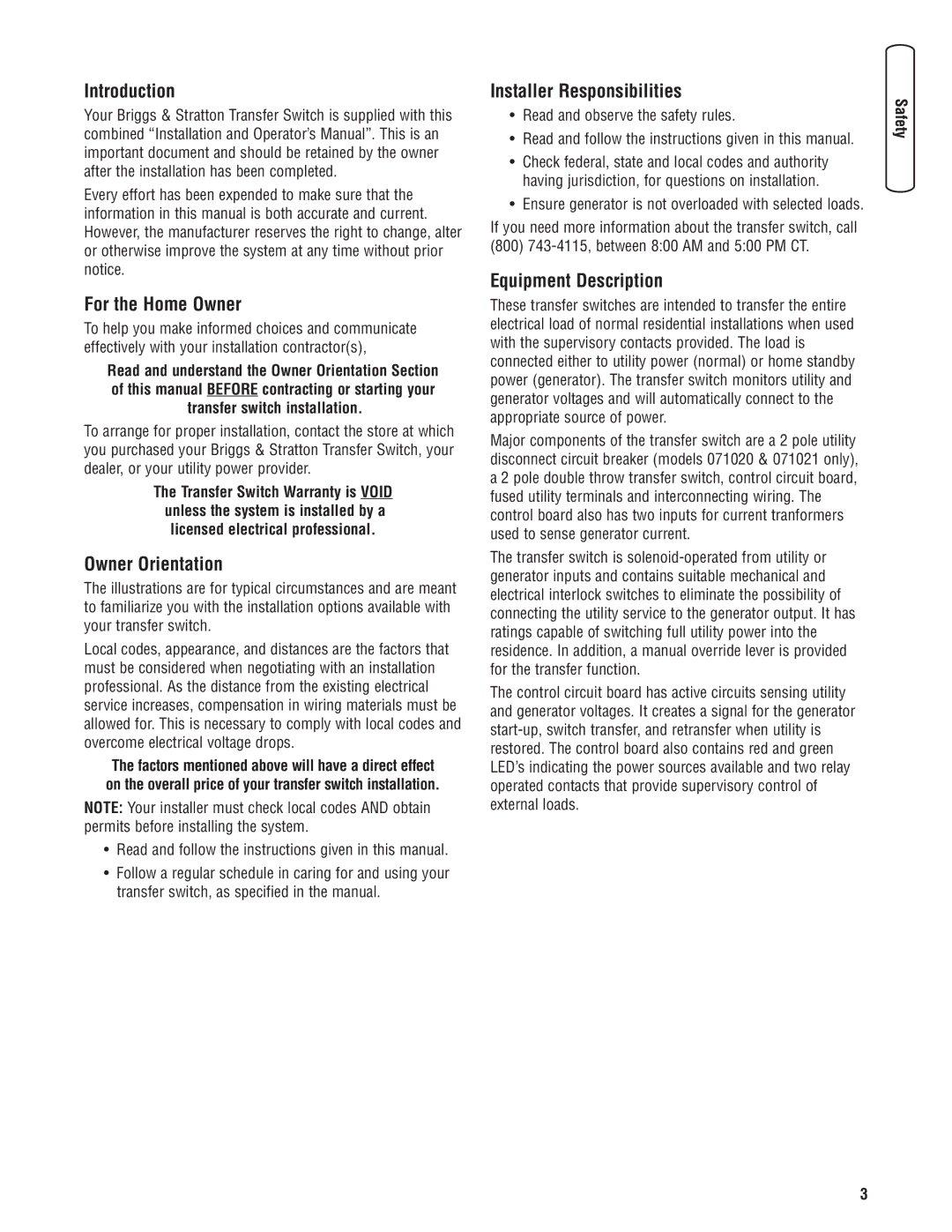Introduction
Your Briggs & Stratton Transfer Switch is supplied with this combined “Installation and Operator’s Manual”. This is an important document and should be retained by the owner after the installation has been completed.
Every effort has been expended to make sure that the information in this manual is both accurate and current. However, the manufacturer reserves the right to change, alter or otherwise improve the system at any time without prior notice.
For the Home Owner
To help you make informed choices and communicate effectively with your installation contractor(s),
Read and understand the Owner Orientation Section of this manual BEFORE contracting or starting your transfer switch installation.
To arrange for proper installation, contact the store at which you purchased your Briggs & Stratton Transfer Switch, your dealer, or your utility power provider.
The Transfer Switch Warranty is VOID unless the system is installed by a licensed electrical professional.
Owner Orientation
The illustrations are for typical circumstances and are meant to familiarize you with the installation options available with your transfer switch.
Local codes, appearance, and distances are the factors that must be considered when negotiating with an installation professional. As the distance from the existing electrical service increases, compensation in wiring materials must be allowed for. This is necessary to comply with local codes and overcome electrical voltage drops.
The factors mentioned above will have a direct effect on the overall price of your transfer switch installation.
NOTE: Your installer must check local codes AND obtain permits before installing the system.
•Read and follow the instructions given in this manual.
•Follow a regular schedule in caring for and using your transfer switch, as specified in the manual.
Installer Responsibilities
•Read and observe the safety rules.
•Read and follow the instructions given in this manual.
•Check federal, state and local codes and authority having jurisdiction, for questions on installation.
•Ensure generator is not overloaded with selected loads.
If you need more information about the transfer switch, call (800)
Equipment Description
These transfer switches are intended to transfer the entire electrical load of normal residential installations when used with the supervisory contacts provided. The load is connected either to utility power (normal) or home standby power (generator). The transfer switch monitors utility and generator voltages and will automatically connect to the appropriate source of power.
Major components of the transfer switch are a 2 pole utility disconnect circuit breaker (models 071020 & 071021 only), a 2 pole double throw transfer switch, control circuit board, fused utility terminals and interconnecting wiring. The control board also has two inputs for current tranformers used to sense generator current.
The transfer switch is
The control circuit board has active circuits sensing utility and generator voltages. It creates a signal for the generator
3
